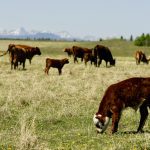Acres seeded to hybrid rye as a source of silage for feedlot cattle in Canada and the U.S. have increased in recent years. Increased use of hybrid rye as a forage source may be driven by greater yield potential relative to conventional rye and the early harvest may allow for double cropping. In some areas, […] Read more














